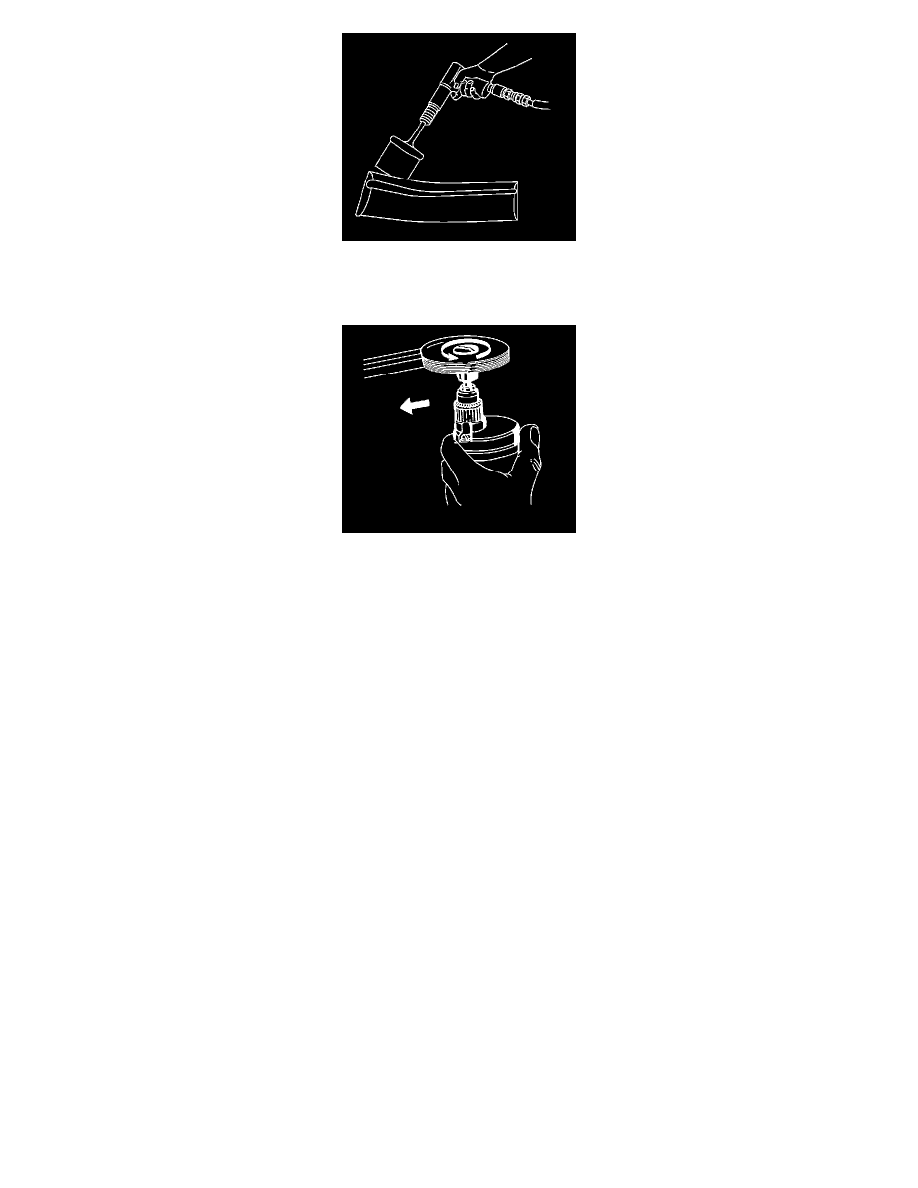Safari Van 2WD V6-4.3L VIN X (2003)

3. Use the J 41409 or a 0.8 mm (0.03 in) fishing line in order to cut through the adhesive material.
Installation Procedure
1. Use a general purpose adhesive remover or an adhesive removal disc (3M 07502 or equivalent) attached to a drill in order to remove all traces of
adhesive from the body panel.
A 2-3 inch square rubber or felt block may also be used in order to aid in the removal of old adhesive.
2. Clean the affected panel area with wax and grease remover, and wipe with isopropyl alcohol.
3. Mark the proper position of the cladding with masking tape. Use the adjacent cladding as a guide.
4. Warm the body panel with a heat gun or a heat lamp to 24-41°C (80-105°F).
5. Make a trial fitting of the piece to the vehicle, checking the alignment and all the gaps and the clearances. Do this before you remove the plastic
backing.
Important: Do not distort the part while you are installing the part. The part may take a temporary set to the distorted shape and appear
to have the proper adhesion, but the part will spring back to its original shape and cause a loss of adhesion.
6. Once you are satisfied with the trial fit, peel the backing from all of the tape.
Set the top row of tape first, and work down the panel to the other rows of tape.
Important: Once the cladding is set into place, do not attempt to remove the panel. This will destroy the adhesive strips and could lead to
part distortion and damage.
7. Hand roll the cladding to the body in order to ensure proper adhesion. A shop towel rolled into a ball and held in the palm of your fist will aid in
applying a consistent, evenly distributed pressure to the panel.
